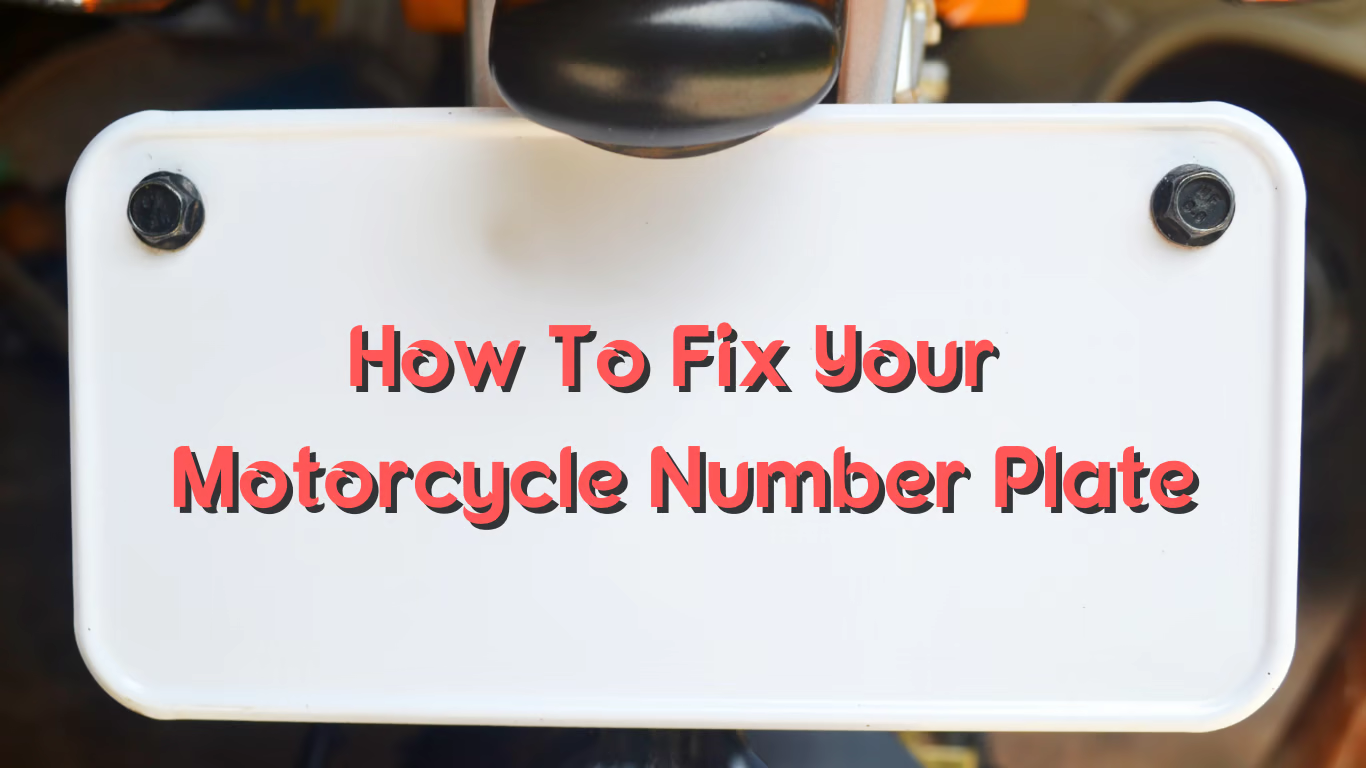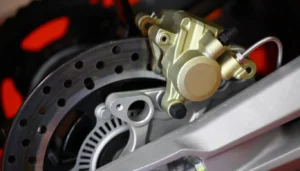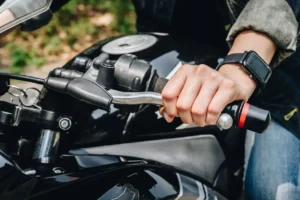Motorcycle riders may suffer immensely from a loose clutch. I’ve encountered this problem before and have identified the solution. If you take the time to read through these seven causes, the following fix will assist you in fixing your motorcycle.
Stretching the clutch cable can result in a variety of problems, including a loose clutch, improper clutch use, a worn-out clutch plate, low engine oil, a damaged motor, drivetrain, or transmission mount, dirty hydraulic fluid in the hydraulic clutch, a damaged or leaking master/slave cylinder, or an insufficient amount of free play in the clutch lever.
This article will explain why your clutch becomes loose and how to fix it.
What happens when the motorcycle clutch becomes loose?
There can be a number of issues when your motorcycle clutch goes loose. The bike will frequently struggle to properly shift gears, which is the most frequent problem.
The bike may move jerkily and become challenging to manage as a result. Sometimes it even results in the bike stalling.
The fact that the bike won’t move more quickly even while the engine speed is not increasing is another issue. Due to the strain on the engine and increased risk of overheating, it can be dangerous.
You must get the clutch checked as soon as possible if you detect any changes in the way your bike shifts gears or if the engine speed seems to be rising arbitrarily. Although loose clutches are relatively simple to repair, if they go unchecked, they can seriously harm your motorcycle.
Loos Motorcycle Clutch Issues:
If your motorcycle’s clutch is loose, there are numerous potential causes.
You will see the most typical reasons for your bike’s loose clutch in the section that follows.
Problem 1: Lack of clutch cable adjustment
A clutch cable that has not been properly set is one of the primary causes of a loose clutch on a motorbike. Typically, the cable will gradually stretch out after many rides.
The clutch cable develops a small bag over time if you bike frequently. You must therefore do routine checks, apply the appropriate lubrication, and adjust the clutch cable to keep it within the typical range in order to lessen or prevent that.
If you wait until it’s too late and don’t adjust the clutch cable, the clutch cable will become overly slack and you won’t be able to release the clutch on your motorcycle.
Solution: Adjust the clutch regular & properly
While riding your motorcycle, you should avoid having a loose clutch because it might be risky. Your clutch cable can be easily adjusted to stop this from happening. A few simple tools and about 30 minutes are all you need.
What You’ll Need
- Phillips screwdriver
- Socket wrench
- Adjustable wrench
- New cable (optional)
Step 1: Locate the Cable Adjuster
Finding the cable adjuster is the first step. On the majority of bikes, it will be next to the footrest hanger on the left side of the engine. Consult the owner’s manual for your motorcycle if you can’t find it there.
Step 2: Loosen the Locknut
After locating the cable adjuster, use your adjustable wrench to remove the locknut holding it in place.
When it is free, move it up the thread until only a quarter inch or so is visible.
Step 3: Turn the Cable Adjuster Clockwise or Counterclockwise
It’s time to turn the actual cable adjuster now. To achieve this, place your Phillips screwdriver into the corresponding slot and rotate it either clockwise to tighten the clutch or counterclockwise to loosen it.
There should be between 1/8 and 1/4 inch of free play at the lever after each turn. You can move on to the following phase if you’ve obtained the necessary amount of free play.
Step 4: Tighten Down Locknut and Test Ride
Using your wrench, tighten the locknut you loosened in order to properly position the cable.
Step 5: Check that it is snug enough to prevent the cable adjuster from moving but not too tight to strip the threads.
Test-riding your motorcycle to make sure the modifications are correct is the final step.
Problem 2: Worn-out clutch plate
The clutch is a crucial part of a motorcycle, as everyone who rides one can attest. It can be utilized to disengage the drivetrain as necessary and aids in controlling how much power is sent from the engine to the wheels. But the clutch is also vulnerable to a lot of deterioration.
Clutch plates deteriorate or fall out of alignment with time, which reduces performance and increases wear on other motorcycle parts.
For instance, the clutch could lose its grip on the engine if the friction material on the clutch plate breaks down. Thus, performance and power may be affected. It can occasionally also result in the clutch slipping out, harming the transmission.
In extreme circumstances, it can even be required to replace the complete clutch assembly. Therefore, it’s crucial to regularly inspect the clutch on your motorcycle and have it fixed as needed.
By doing this, you can ensure that your bike keeps running smoothly and that you have many years of trouble-free riding ahead of you.
Solution: Change the clutch if it’s worn out
You are now prepared to change your motorcycle’s clutch. Perhaps you want to be proactive and perform some maintenance before it becomes a problem because it has been sliding a little lately.
In either case, changing your clutch is a simple task that anyone with a basic understanding of mechanics can complete.
- Before anything else, drain the motorcycle’s engine oil. It will simplify engine maintenance and lessen the chance of fluids dripping onto your work surface.
- Completely take off the clutch cover to reveal the clutch plate. You will have access to the clutch parts as a result.
- After that, remove the clutch friction plate from its original location. The plates that will be changed are those ones.
- Before continuing, check your clutch gasket for damage and make any necessary repairs or replacements. Always use a brand-new clutch gasket.
- To effectively lubricate the new friction plate, you must soak it in high-quality oil before installing it. It will make them more durable and make installation simpler. Be sure to adhere to the previous clutch plate assembly design. Move on to the following step after installing the friction plate.
- Reinstall the clutch cover in its original location. Everything will be restored to as it was before to your intervention.
- Refill the engine oil and coolant levels to their pre-original levels. Don’t fill it too high!
- Switch on the engine to test the new clutch! You’re finished if everything feels nice!
Problem 3: Low engine oil cause loose clutch
Low levels of engine oil are one typical cause. The clutch will slip if the oil level becomes too low.
The reason is that the oil lubricates the clutch components, and if there is not enough oil, the components may begin to grind against one another, resulting in wear and tear.
In extreme circumstances, this might even result in the clutch failing. Therefore, it’s crucial to change your engine oil at the suggested intervals to keep your motorcycle running smoothly and prevent expensive damages.
Problem 4: Improper use of the clutch makes it loose
Any motorcycle must have a clutch, thus it’s important to know how to operate one properly.
Unfortunately, a lot of riders don’t spend the time learning how to properly utilize their clutch, which might harm the clutch or cause it to wear out more quickly.
When the clutch is used incorrectly throughout a ride, the clutch may experience excessive strain and eventually become less effective.
Furthermore, using the clutch while driving might harm the engine and transmission unnecessarily.
Solution: Better clutch control means less chance of loose clutch
Learning how to keep a soft hold on the clutch lever while riding is crucial for preventing loose clutch issues. It will aid in preventing premature clutch engagement, which could lead to overheating and failure.
A lot of riders keep their clutch lever partially depressed when riding, which shortens the clutch life. When they are new, the clutch assembly will suffer damage.
Never engage the clutch when shifting gears is not necessary. As you release the clutch level, attempt to keep the shifting smooth. The outcome of this strategy will soon be evident.
Problem 5: Broken motor, drivetrain, or transmission mount is a big issue
A loose clutch may be brought on by a damaged motor, drivetrain, or transmission mount. When the motorcycle is running, both the engine and the transmission are in motion, and the clutch is engaged. The bike’s frame is where the engine and transmission are placed.
The motor mount, drivetrain mount, and transmission mount are the three mounts that attach the engine and transmission to the frame. These mounts dampen transmission and engine vibration.
The engine and transmission will move apart from the frame if one of these mounts fails. This motion will cause issues and could leave the clutch loose if it doesn’t fully disengage.
It may be challenging to change gears and the clutch components may prematurely wear out. It is essential to frequently check these mounts and replace them if they appear worn or damaged.
Solution: Replace the damaged motor, drivetrain, or transmission mount
While most motorcycle maintenance is quite simple, there are a few potential issues that may be more challenging to resolve. One such problem is a damaged powertrain, motor mount, or transmission.
To prevent further harm, you must act fast if you see any of these issues. Check your handbook first to see if you can locate the issue and resolve it on your own.
If not, bring the bike to a licensed repair right away. While waiting, drive slowly and avoid using the clutch or changing gears frequently.
Problem 6: A broken or leaking master/slave cylinder
Your motorcycle’s loose clutch is caused by a damaged or leaking master/slave cylinder.
If the clutch on your motorcycle seems loose, there is probably an issue with the hydraulic clutch system. The hydraulic clutch system, which consists of a master cylinder, slave cylinder, and hydraulic line, applies fluid pressure to the clutch to operate it.
The clutch will eventually feel loose if any of these parts is broken or leaking. Additionally, a loose clutch may result from a blocked or restricted hydraulic line.
Solution:
The best course of action in this situation to return the clutch to its usual position is replacement.
To solve the issue, you must examine the hydraulic system and replace or repair any broken parts. The clutch on your motorcycle should feel comfortable and tight once more after you’ve done that.
Problem 7: Expired hydraulic fluid
Clutch loss occurs if the clutch system’s hydraulic fluid becomes tainted or has reached the end of its useful life. Both the engine and the rider may suffer damage as a result, which could result in loss of control. A fluid that has run out is among the frequent causes of the clutch losing responsiveness.
Solution: Change & flush the hydraulic fluid
To keep everything under control, replace the hydraulic fluid once a year. Your clutch will function flawlessly and without any slipping under its own weight.
If an air bubble enters the hydraulic clutch, neither the clutch lever nor the clutch will operate as intended. So the likelihood of that would be decreased by flushing it and replacing the oil.
Wrapping up
Each mechanical failure of your motorcycle happens due to some lack of maintenance or damaged parts. And the loose clutch is just another name on that list.
Ensuring proper gear shifting and maintaining the bike top-notch would help the clutch life stay for a long time and the engine too.
I hope this article will help you to deal with & solve your motorcycle’s loose clutch problem.






